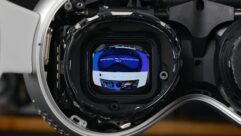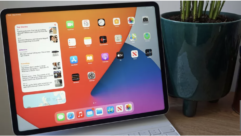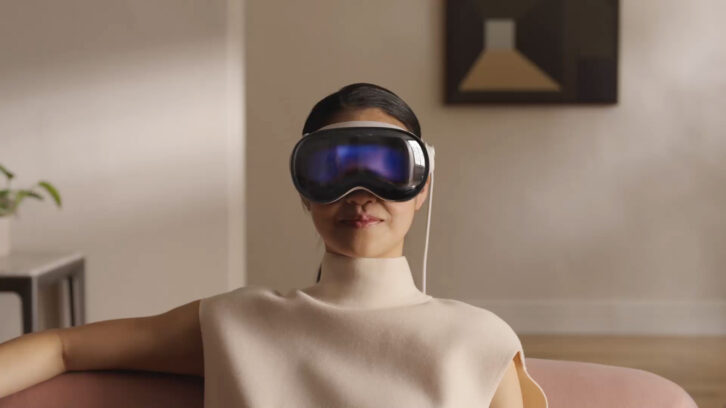
Reviews for the Vision Pro, one of Apple’s most anticipated devices ever, have begun to come in. The device launched yesterday for those lucky enough to secure a preorder before they sold out, but Apple has has already begun production work on upcoming batches, and even new models, of the AR headset. Reviews thus far have been mostly positive, agreeing that the Vision Pro has its fair share of impressive attributes, but there is still more progress to be made before the promised utopia of AR becomes a reality. Consistent pain points have been the awkward battery pack, head and neck comfort due to the device’s weight, difficulty with the virtual keyboard, and app integration. That said, reviewers have been impressed with the headset’s audio and video fidelity, AR implementation, and responsive gesture controls. Here’s what reviewers are saying:
From The Verge
After all these years of Apple talking about AR, I counted exactly three things in my entire time with the Vision Pro that offered a preview of the AR future. One: when you look at your Mac, the Vision Pro sometimes puts up a “connect display” button above it that starts screen sharing. Two: when you’re typing on a Bluetooth keyboard and look down at your hands, it puts a little text preview window above the keyboard so you can see what you’re typing. These are little features, yes, but they are some of the first true AR computing features that have ever shipped on a mainstream device, and they are an incredibly tantalizing glimpse of what might be possible. They also happen to be incredibly useful. The third AR thing I saw was the loading screen of Super Fruit Ninja, which allows you to throw a strawberry at a pig that’s running around on your floor. This seems slightly less historic. [MORE@THE VERGE]
From CNBC
The floating keyboard is useful for search or typing quick messages, but you won’t be able to type very fast at first. You look at each letter on a digital keyboard and select it, or reach out and tap the digital keyboard. I got faster during my time with the Vision Pro, but nowhere near as quick as I am on my iPhone or a real keyboard. You can just use Siri voice-to-text to respond to iMessages or enter URLs in the browser (and launch apps). Still, you’re going to want to use a keyboard if you have to do a lot of typing. There’s also the battery pack that plugs into the headset with a proprietary plug that you twist in. I don’t mind it. I thought the pack worked fine, but it would be a lot easier if it was just embedded into the headset, though that would add weight. [MORE@CNBC]
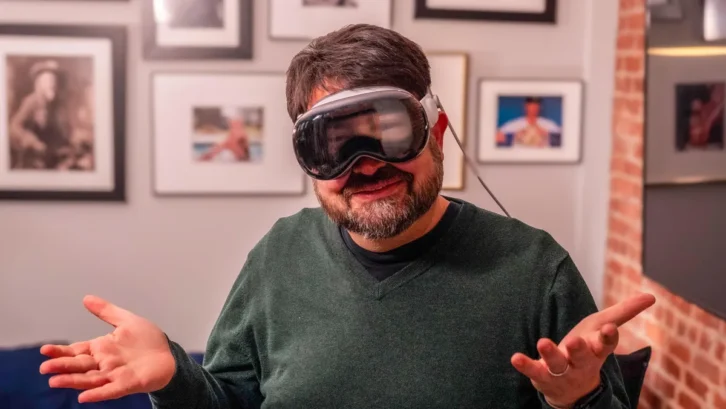
From CNET
Apple’s big bet on the immersive future is also a big step into a new phase of devices that intertwine with the software we already use on our phones, tablets and computers. The Vision Pro runs on a new operating system, VisionOS, but it’s still essentially an iOS computer inside a mixed reality VR headset, with the benefits and design challenges of each but elevated with a whole bunch of new features and ideas. The headset is the best wearable display I’ve ever put on. But at its price, and with so few VisionOS apps at launch, the Vision Pro isn’t a device I’d recommend to any of my friends or family. If you’re in the immersive industry and can afford one, then that’s another story. But for anyone else, I’d recommend you get a free demo at an Apple Store, marvel at its features and wait and see. That said, I can’t stop thinking about it. Also, I wrote most of this review in it. I’m still inside. [MORE@CNET]
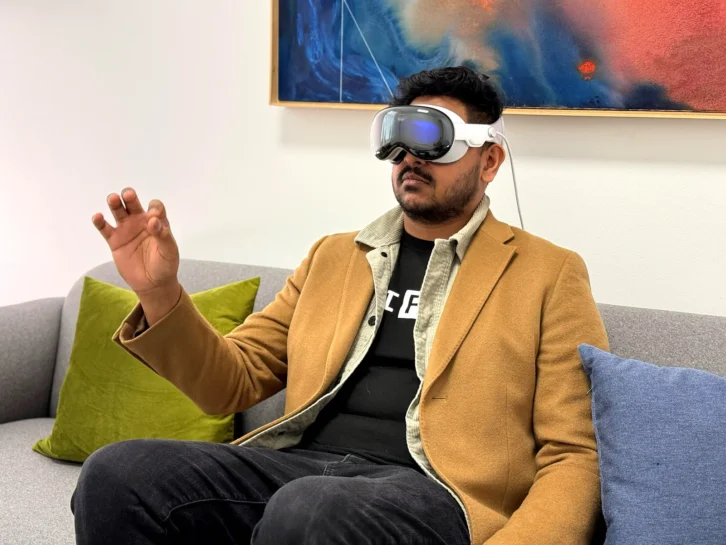
From Wired
The elephant in the room is the battery pack. There’s a wire protruding out the left side of the headset that leads to a rectangular battery, which lasts for around two hours on a single charge. You can plug in the battery to an outlet to keep the Vision Pro running for hours, but if you want to move around—say, if you’re running an interactive experience or playing a spatial game—you’ll have to stow the battery in a pocket. It’s an inelegant solution and showcases the limitations with the technology that even Apple couldn’t get around (and this is likely why Apple has tried so hard to hide the battery’s presence from its marketing and press images). Thankfully, after 30 minutes of Vision Pro-ing, the battery was still cool to the touch. [MORE@WIRED]


